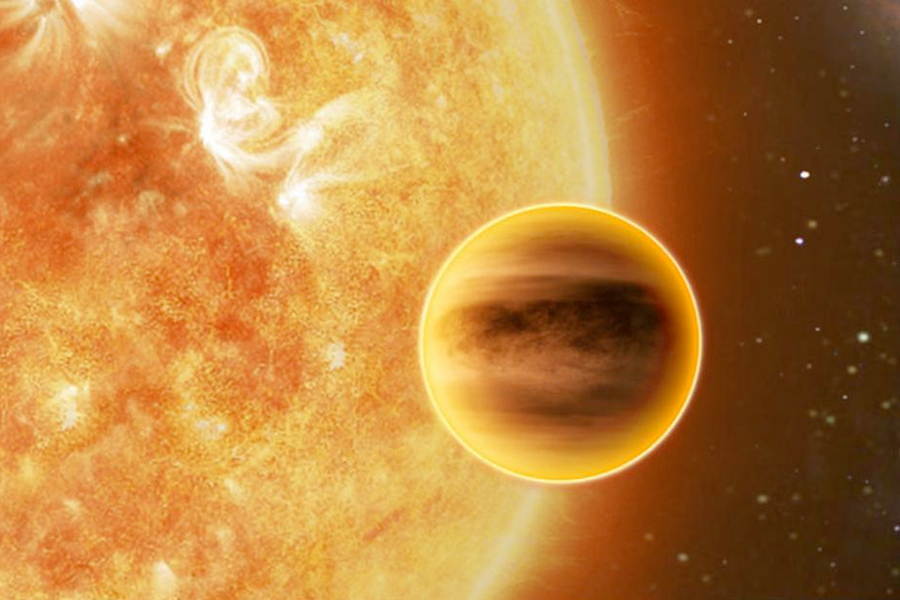- About▼
- Exo 101▼
- News
- Research▼
- Jobs + Internships▼
- Public Outreach▼
- Our Team▼
- Contact Us
- FR▼

James Sikora, a postdoctoral fellow at Bishop’s University, joined the iREx in September 2019. In September 2022, he left iREx to pursue his career as a postdoc at the Anton Pannekoek Institute for Astronomy at the University of Amsterdam where he’ll be continuing to do exoplanet research. He answered a few of our questions about his time at iREx.

James Sikora. (Credit: Courtesy Image)
What did you like most about your time in Montreal?
As a member of the exoplanet group at Bishop’s University, I spent most of my time in Lennoxville, Sherbrooke. Aside from the wonderful people that I’ve been fortunate to meet and work with during this time, I also enjoyed being close to beautiful lakes and mountainous landscapes. The fall season in the Eastern Townships of Quebec is truly special!
What were the most important projects you led at iREx?
I think the most important and exciting projects I have been leading while a member of iREx have been (1) an upcoming James Webb Space Telescope observing program targeting an unusual hot Jupiter-like planet and (2) a program using the Gemini-North telescope in Hawai’i to collect high-precision radial velocity measurements in order to study a system of very young planets.
What question were you trying to answer in these projects?
In the case of the Webb Telescope observations that are scheduled for November of 2022, we are hoping to help answer questions about the conditions under which clouds form and dissipate within the atmospheres of hot Jupiter-like planets. We will do this by observing a particularly special planet that has a highly eccentric orbit. The distance between the planet and its host star — and hence, the amount of energy absorbed by the planet and its atmosphere — varies dramatically over the course of a single orbit.
Obtaining high-precision radial velocity measurements can allow you to measure an exoplanet’s mass. The vast majority of exoplanets discovered to date are old (i.e., either close in age to the Solar System planets or older). Measuring the masses of very young planets — such as those that we have recently observed using Gemini — can give us important clues about how planets form and evolve. When and to what extent do gas-rich planets shed their outer layers? How quickly do gas-rich planets contract as they cool over time?
What did you discover?
While the Webb Telescope observations have yet to be obtained, recent publicly released data from the telescope has shown that the instruments are performing spectacularly, making us all very excited for our own upcoming observations.
For the high-precision radial velocity measurements of young planets, our preliminary results are in agreement with the current theoretical understanding of how gas-rich planets cool and contract over timescales of hundreds of millions to billions of years. This kind of confirmation provides a key constraint that can be used in models to improve our understanding of planetary formation both outside and within our own Solar System. We are working on a paper that will give more details on this subject. Stay tuned for the full story!
What motivates you in exoplanet research?
What motivates me to do exoplanet research is largely the end product: learning something new that helps to push the boundaries of what we currently know about planetary formation and evolution. However, I am motivated by the whole process of doing observational astronomy; I feel extremely privileged to be able to use amazing, cutting-edge observatories to collect previously unseen measurements that ultimately lead to new discoveries.
Why do you think people should be interested in this kind of work?
I believe that any research that can help us better understand how we as the human species got to where we are today and where we might be headed hundreds or thousands of years from now to be very important and exciting. The diverse landscape of exoplanets discovered so far provides us with important clues that help to guide our fundamental understanding of how planets such as those found in the Solar System form and evolve.
How does your time with us helped you in your new job?
While spending time within iREx, I learned a ton about new and improved methods of analysing observational data sets. Moreover, thanks to help from researchers at iREx and Bishop’s University, I’ve been able to get my hands on a wide range of data that I did not previously have a lot of experience with such as high-precision transit spectroscopy and radial velocity measurements. This has allowed me to greatly expand my skillset in the context of observational exoplanet research, which is already helping me to develop new and exciting paths for my own research moving forward.
You must be logged in to post a comment.